You see it every day: reviews, TikTok videos, product photos in stories, memes...
In short, your users are already creating content around your brand.
What if you learned how to really use it?
UGC is more than just a “plus.”
It's a marketing lever in its own right.
But for it to work, you need to go further than simply reposting a customer photo or Google review.
What you need is good UGC.
Content that makes people want to buy.
That shows your product in action.
That creates a connection.
Why brands are betting on user-generated content
UGC has clearly changed the game.
It's no longer just a nice bonus to share in a story.
It's a performance lever in its own right, and brands that understand this are reaping the benefits.
First, because it ticks all the right marketing boxes.
It improves social proof, that famous trigger that reassures consumers before they buy.
It boosts conversion rates, especially when integrated into product pages.
It generates engagement, which is naturally stronger than branded content.
And it improves advertising ROI by providing authentic visuals for your paid campaigns.
Second, because it's exactly the type of content that consumers want.
On TikTok, Instagram, and even Pinterest, users no longer want to see overly polished ads.
They want authenticity, real life, and sharing.
And that's exactly what UGC does: it shows your products in real-life situations, with no filters (or almost none), by people just like them.
Finally, because this content fits perfectly into all touchpoints of the customer journey: discovery on social media, reassurance on a product page, conversion via an email or retargeting campaign.
But be careful. The goal isn't just to have UGC content.
The goal is to have UGC content that converts, builds loyalty, reflects your brand, and makes people want to buy.
And that's exactly what we'll be breaking down in the next few sections.
👉 To learn more, here is a comprehensive article on the subject of UGC.
Pssst... You might find this interesting!
Collecting UGC is strategic for your brand, and we can probably help. Check out our platform!
10 types of UGC content to incorporate into your strategy (with concrete examples)
There is no single way to do UGC.
In fact, there are a dozen formats that you can easily activate, each with its own uses, channels, and impact on conversion.
We've grouped them here, with a concrete example for each one.
This should give you some inspiration, help you identify what might work for your brand, and, above all, get you started.
Customer reviews and testimonials: the foundation of UGC
This is the simplest format, but also one of the most powerful.
A 5-star rating, a photo, two lines of sincere text... and you've just generated some extremely useful content to convince future buyers.
Customer reviews are everywhere: on product pages, on Google, on Trustpilot, or directly in the comments on your posts.
And for good reason. They reassure, validate a purchase intention, and create an immediate sense of trust. No need for a big production, just authentic and accurate feedback.
Take the example of a customer who leaves a 5-star review with a photo of the product used in her home.
You can use this content everywhere: on your website, in your emails, in your ads.
It's social proof at its best. And it works.
Some brands have even made it a cornerstone of their strategy.
This is the case with Epycure, which systematically includes customer reviews on its product pages.
The result: a more credible, smoother, and above all more effective shopping experience.
So if you haven't already done so, activate your customer reviews.
Ask for them. Highlight them.
And above all, use them as marketing content in their own right.
👉 To learn more, read our article dedicated to customer testimonials.
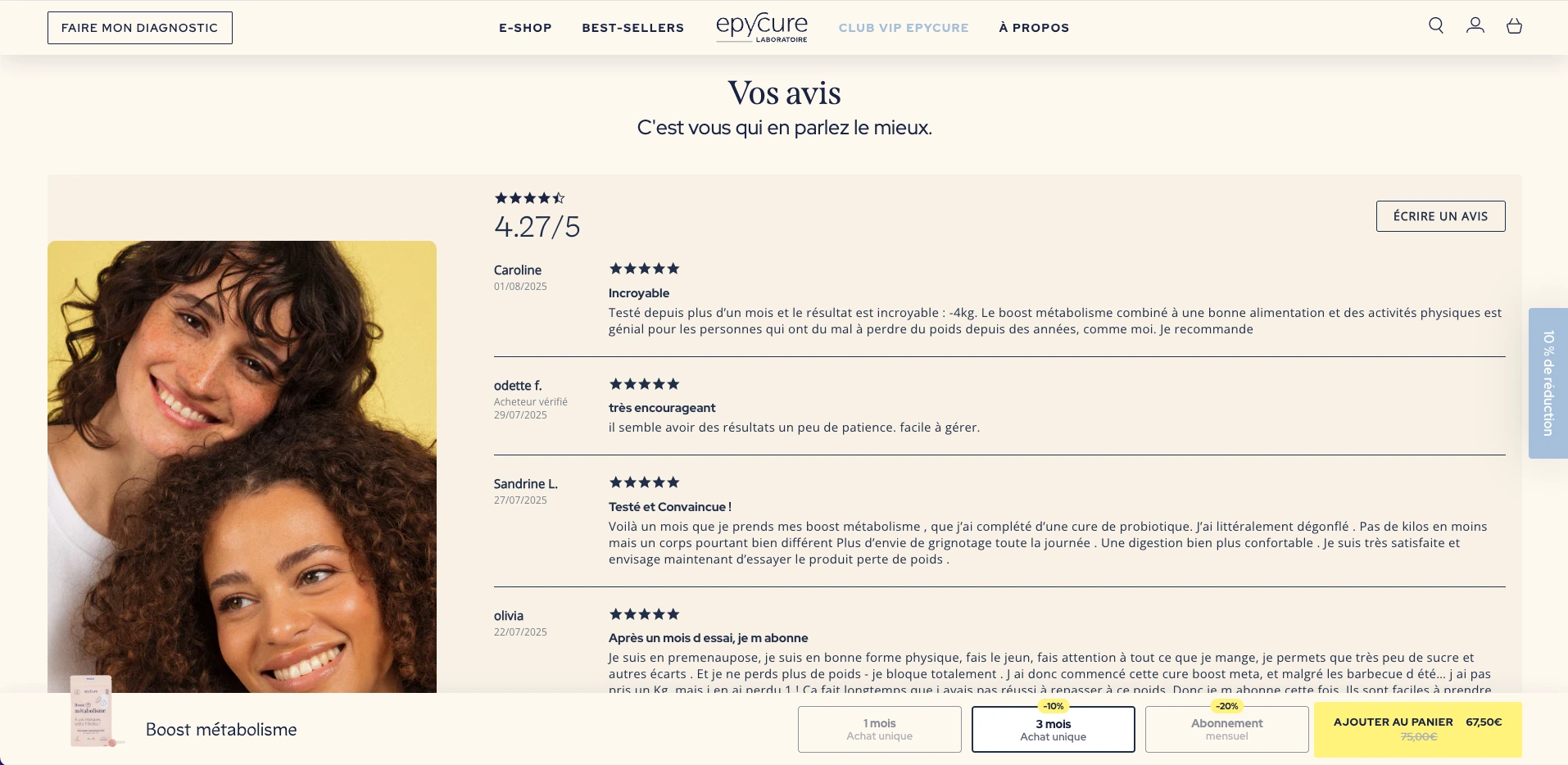
Product photos on social media
When a customer posts a photo of your product on Instagram, it's much more than just a tag.
It's social validation, proof of love, and content that you can leverage on a large scale.
This type of UGC is everywhere: in feeds, stories, carousels... and it works because it shows your products being worn, used, and experienced.
Take a user who shares a photo of their outfit, tags you, and uses your hashtag.
You gain visibility, credibility, and reusable content.
The strength of this format is that it integrates seamlessly into your marketing materials: home page, product pages, newsletters, paid campaigns.
And it humanizes your brand effortlessly.
A good example is Calvin Klein's #MyCalvins campaign.
By inviting its community to post photos of themselves in their underwear with this hashtag, the brand generated hundreds of thousands of authentic, relatable pieces of content that aligned with its values.
Above all, it showed that its products are part of real life, with real people.
This type of UGC creates a powerful mirror effect.
Users recognize themselves in the content. They project themselves onto it.
And often, they go on to make a purchase.
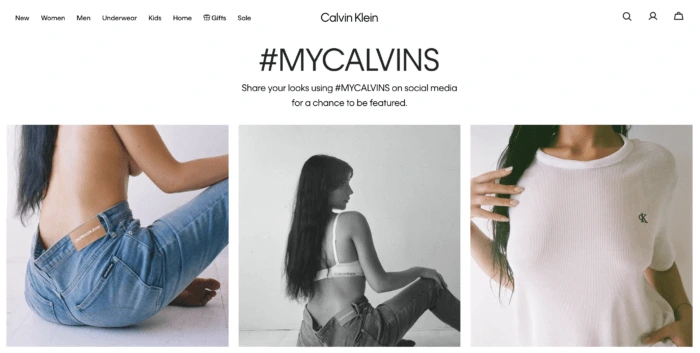
TikTok videos / Reels
This is clearly the format of the moment. Short, vertical videos, filmed spontaneously (but with style), have completely changed the way consumers discover new products.
A spontaneous unboxing, a spontaneous reaction, a quick live test... and you get highly engaging content, tailor-made for TikTok or Instagram Reels.
This type of UGC isn't overproduced, and that's exactly what people like about it. It shows the product experience as it is experienced by the user.
No filters, no sales pitch, just a real person discovering, testing, and giving their opinion. It's authentic, and it converts.
A perfect example? Nébuleuse, the jewelry brand, which saw its visibility skyrocket thanks to unboxing videos posted by its customers.
We see hands delicately opening the packaging, discovering the jewelry boxes, taking out the jewelry, commenting on the quality...
These videos have racked up thousands of views and make you want to have the same experience.
The brand didn't even need to produce them itself: its customers took over, naturally.
Easy to create for users and powerful for brands, TikTok and Reels videos have become a real conversion driver.
If your products lend themselves to it, you'd be wise to encourage it.
👉 Speaking of videos, take a look at these 10 examples of inspiring UGC videos.
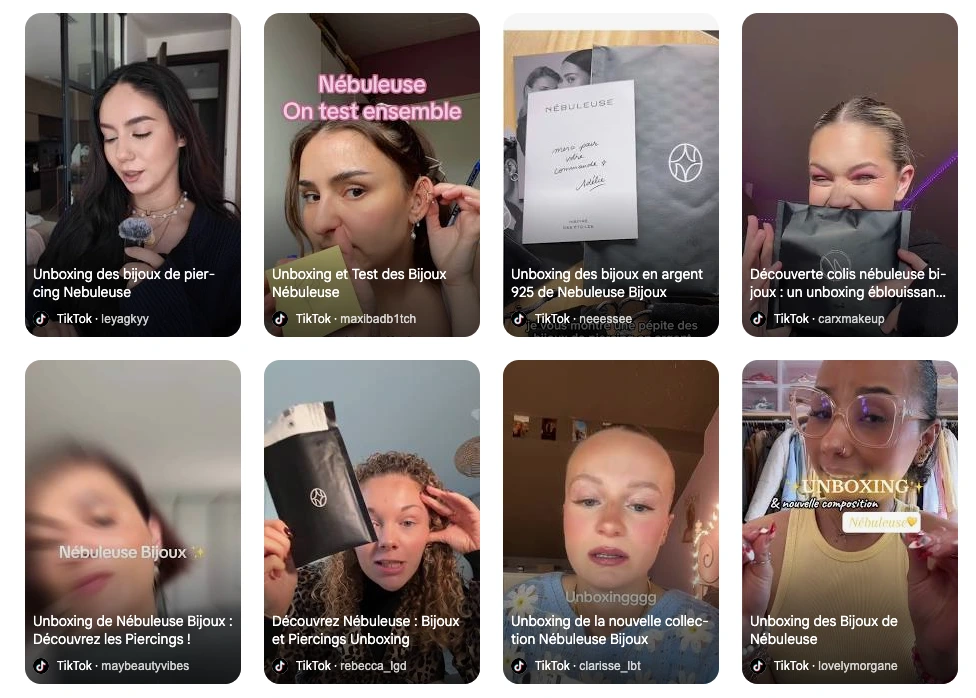
Instagram Stories with brand mentions
This is one of the most natural UGC formats.
The user doesn't think too much about it; they film a scene from their daily life, tag the brand, and post it to their story.
Simple, fast, effective.
And yet, the impact can be huge.
When someone shares their favorite product as part of their morning routine, during a meal, or while unboxing it, they're giving their community an implicit recommendation.
It's fluid, unstaged, and often more credible than a 2-minute video.
The brand, for its part, gets highly engaging content that it can repost in its own stories or incorporate into retargeting campaigns.
Some brands even use it as a continuous social proof channel.
As soon as a customer mentions the brand, it's shared.
The result: a constant stream of authentic content that builds trust, engagement, and desire to buy.
It's simple: if your product is part of your customers' daily lives, you already have UGC waiting for you in your stories.
All you have to do is capture it, showcase it... and turn it into a marketing lever.
Vlogs or user blogs
Some content takes longer to create, but it carries real weight.
This is the case with vlogs and blog posts written by your users.
They share their experiences in detail, explain why they chose your product, how they use it, what they think of it... and create rich, lasting content that can really influence others.
This type of UGC is particularly useful for products or services that are a little more complex and require education or in-depth feedback.
And that's where it gets interesting: in addition to reassuring users, this content improves your visibility on search engines.
It's 100% natural SEO, written by your community.
A good example is HubSpot, which opened its blog to its community.
The result is a diversity of viewpoints, concrete use cases, and a real relationship of trust with its users.
You can do the same thing on your own scale.
A “contributions” page on your website, a link in your newsletter, and you're good to go.
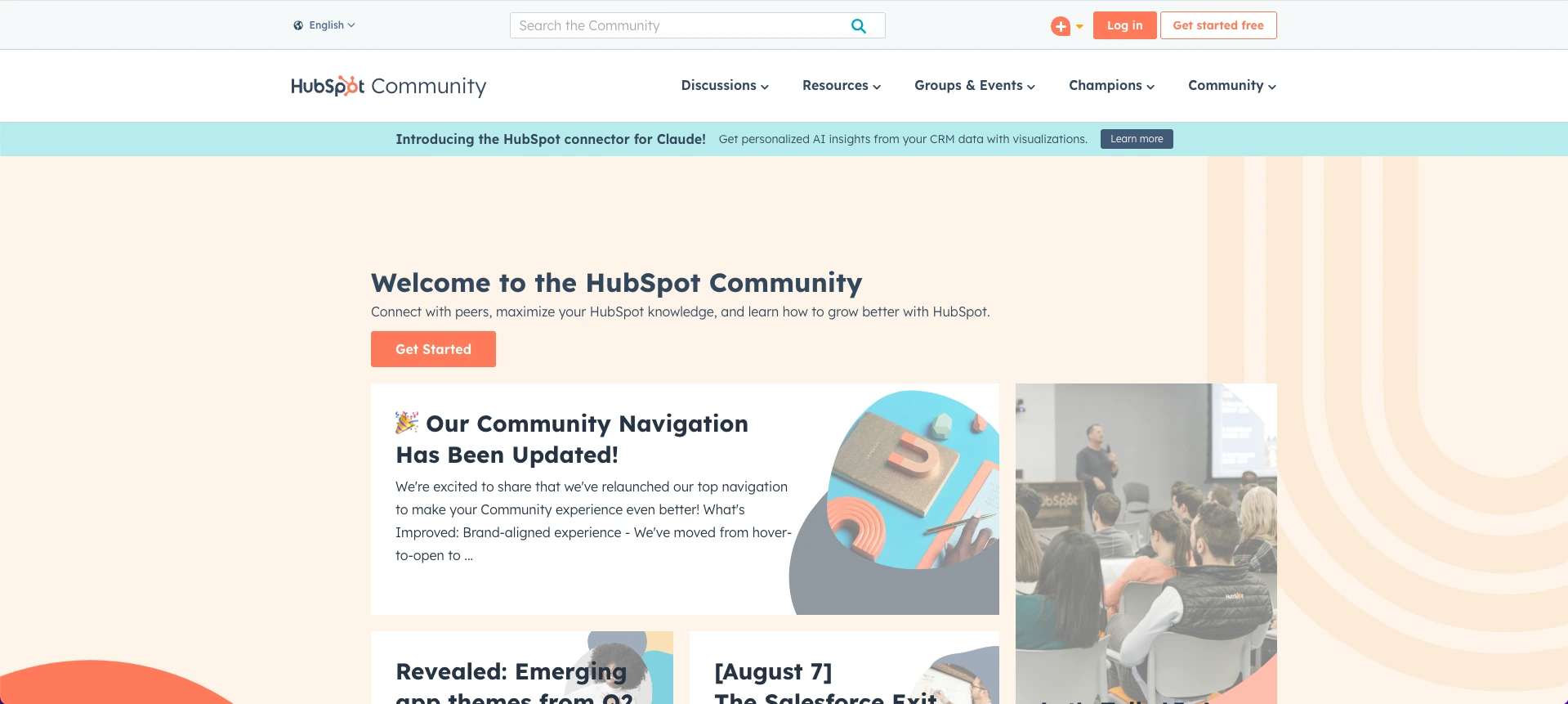
Video reviews on YouTube
When a creator posts a detailed YouTube video about your product, you get much more than just content: you gain credibility, their audience's credibility... and often huge reach.
These long formats allow viewers to see all aspects of the product: texture, application, wear, and long-term results.
And it's this level of transparency that really resonates with consumers.
A striking example: NikkieTutorials, a major figure in the beauty world, received PR products from Ariana Grande's R.E.M. Beauty brand.
In her video, she tests the range, shares her honest impressions, clearly mentions that it's sponsored content, talks about what she likes and doesn't like, and doesn't cover anything up.
The result is natural, honest, and makes all the difference
This type of UGC is valuable for several reasons:
- It reassures consumers with detailed and transparent testimonials.
- It improves your presence on YouTube and in Google results.
- It converts sustainably, especially in segments such as beauty and skincare.
So if your product deserves a real and credible demonstration, encourage creators, even without sponsorship, to share their feedback.
These videos are real drivers of trust and conversion.
Comments on a post
We rarely think about it, but your comments are a gold mine.
Under an Instagram or Facebook post, a follower shares their experience, tells how your product helped them, gives their opinion, or shares an anecdote.
This is raw, sincere, and often highly engaging UGC.
These comments are valuable on two levels.
First, because they reinforce social proof directly under your posts.
Second, because you can repurpose them as visuals, stories, or even quotes for your emails or product pages.
And it's not just for big brands.
You can easily screen an enthusiastic customer comment, dress it up with a nice visual, and use it in a campaign.
The result is often more impactful than a traditional advertising visual.
Because it comes from someone else. And that's the power of UGC.
Participatory challenges or contests
Coca-Cola's #ShareACoke campaign is an excellent example.
By personalizing bottles with first names, the brand encouraged consumers to post photos of themselves with their bottle.
Simple, but incredibly effective.
This type of format turns your customers into active ambassadors.
They don't just like your product, they participate in its story.
And that's what creates a stronger, more lasting connection.
Memes created from a product or campaign
This is perhaps the most unpredictable format... but also one of the most viral.
When a brand or product becomes the subject of a meme, it's often a sign that it has successfully established itself in pop culture.
And this type of UGC can generate huge visibility without you having to lift a finger.
How does it work? Internet users take an ad, visual, message, or situation associated with a brand and repurpose it in a humorous way.
It's spontaneous, free, often funny... and sometimes much more impactful than a planned campaign.
A good example: Jet2holidays.
After a repetitive ad was broadcast extensively in the United Kingdom, internet users began parodying it on TikTok.
The result: thousands of videos, remixes, ironic comments... but also a boost in brand awareness, which played along with self-deprecating humor.
This type of UGC may seem uncontrollable, but it is extremely powerful.
You just need to know when to ride the wave (and when to hold back).
If the vibe is positive or funny, don't hesitate to repost the best memes, interact... and show that you have a sense of humor.
Brands that do this well gain goodwill and reach.
Before/after photos
It's simple, visual, and very powerful.
The before/after format allows you to show the effectiveness of a product in a straightforward way.
In the skincare, haircare, and wellness sectors, it's a powerful tool.
A photo before and a photo after a few days or weeks of use, and you have ultra-impactful content without having to write a single line.
At La Belle Boucle, this format has become a must.
The brand regularly encourages its customers to share the evolution of their hair after adopting the routine tailored to their curl type.
The result: hundreds of authentic posts showing better-defined curls, less frizz, more volume... and a visible transformation.
All without sponsorship, without a studio, just real results.
These photos are then featured on social media, in emails, and on product pages.
And they hit the mark. Because they reassure, inspire, and make people want to try it for themselves.
If your product has a visible impact, go for this format.
Your users will do the demo for you.
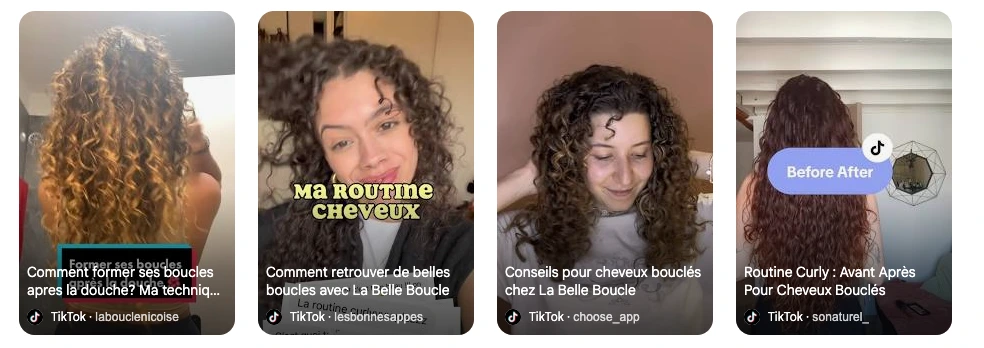
What these examples reveal about an effective UGC strategy
Let's be honest: not all UGC is created equal.
Blurry, poorly framed, or off-topic content will not have the same impact as clear, sincere feedback that is well aligned with your brand universe.
What makes the difference?
Three simple but powerful ingredients:
- authenticity (we want the real thing, not fake),
- smart integration into your product or campaign strategy,
- and distribution in the right place at the right time.
UGC isn't just for show.
It's a lever for conversion, social proof, reassurance, engagement, reach... in short, a real performance lever.
But it's also a powerful branding tool.
It feeds the image people have of your brand.
Brands that perform well with UGC don't just wait for their users to create content.
They organize, stimulate, and promote these voices.
And that changes everything.
How Loyoly makes it easy to collect UGC
At Loyoly, we understand one thing: to generate good UGC, you need to motivate users, simplify their lives, and automate whatever you can.
Our platform allows brands to invite their communities to create content through simple and engaging tasks in exchange for rewards (vouchers, points, gifts, etc.).
It's a real loyalty mechanism that makes people want to participate.
The added bonus? We automate content validation, centralize all UGC in a dedicated (royalty-free) library, and provide you with comprehensive dashboards to track the impact on your KPIs.
The result: more content of higher quality, posted where it matters (Instagram, TikTok, reviews, etc.), by the people who matter most to your brand.
No headaches, just results.

.png)




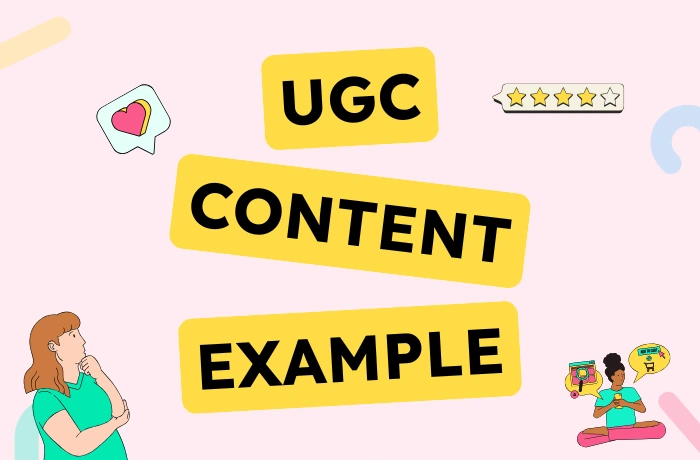




.png)
.png)
.png)
.png)
.png)